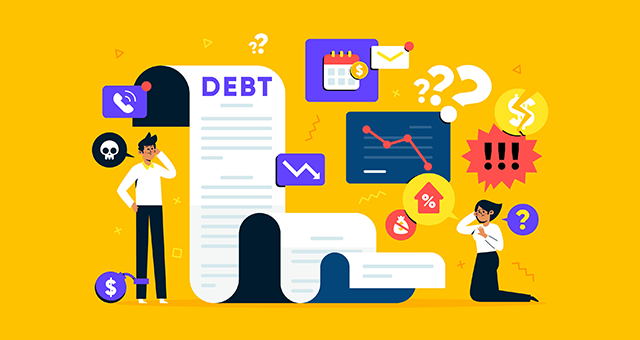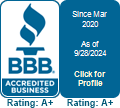
Debt Repayment Dilemma: Should You Pay off Larger or Smaller Debts First?
As everyone knows, having no debt at all is ideal, but it is a fact that most of us will carry debt at some point in our lives.
If you are trying to manage and eliminate multiple debts with varying balances, it may feel like navigating a maze.
Initially, you may be debating whether to prioritize paying off your smaller debts before your larger ones. Many in your situation have asked themselves this age-old question many times. Dave Ramsey, a well-known financial expert, advocates paying off debt on the account with the lowest balance. On the other hand, SuzeOrman, a financial expert, advises paying off debt on an account with the highest interest rate first.
Here, we will explore both approaches and weigh the pros and cons to help you decide the most effective debt repayment strategy for your financial situation.
I. The Snowball Method: Paying off Smaller Debts First
Here is how The snowball method, popularized by financial expert Dave Ramsey, functions:
1. Sort your debts into categories based on size (excluding interest rates)
2. Make the bare minimum payments on all but the smallest debt.
3. Fund the smallest debt as much as possible until settled.
4. Once it is gone, apply the money you were paying toward that debt to the payment of the next-smallest debt until settled off.
5. Continue until you have paid off all of your debt!
The pros of this method are:
Psychological Boost
When you pay off smaller debts, you experience a surge of excitement and accomplishment that motivates you to continue tackling other debts (as you find yourself with more money and fewer payments).
Simplified Approach
By focusing on paying off one debt at a time, you can streamline your repayment process and reduce the mental burden of managing multiple debts.
Debt Free Momentum
As you pay off each smaller debt, you free up more money to put into other debts, accelerating your progress to becoming debt-free.
The disadvantages of this method are:
You might have to pay higher interest
Interest rates are not taken into account when using the debt snowball method. Consequently, it is plausible that large debts may have higher interest rates and lead to an increase in overall interest payments over time.
It will take longer to pay off Debts.
Ignoring the highest-interest debts could result in a ballooning total amount owed and a prolonged repayment period.
II. The Avalanche Method: Tackling Larger Debts First
Here is how SuzeOrman’s debt payoff method works:
1. Prepare a list of every debt you have and its respective interest rate.
2. Pay the minimum amount due each month on all your accounts except the one with the highest interest rate.
3. Put as much extra money as you can afford into the account with the highest interest rate to help you pay it off sooner. Make sure the payment is substantial yet affordable.
4. After paying off that debt, you proceed to the next highest interest rate, and so on, until you are debt-free.
Here are some advantages of this approach:
Interest Savings
When you target high-interest debts first, you minimize the amount of interest accruing over time, potentially saving you money in the long run.
Faster Debt Repayment
Paying off high-interest debts sooner can accelerate your overall debt-repayment progress, freeing up more money to tackle other debts.
Financial Efficiency
Prioritizing high-interest debts aligns to minimize the total cost of debt repayment, making it a financially prudent strategy.
Disadvantages of this method are:
This approach is Arduous
The loans with the highest interest rates frequently have large balances associated with them as well. Consequently, it takes a lot longer for you to succeed.
Patience and Discipline is Necessary
It may take willpower to go through the debt avalanche technique because it may not yield the same immediate benefits as the debt snowball method.
Conclusion
Ultimately, whether you pay off the smaller or the higher debts first depends on your financial goals, psychological factors, and personal preferences. The snowball method offers a psychological boost and simplified approach, while the avalanche method prioritizes monetary efficiency and interest savings.
Consider assessing your debt portfolio, evaluating interest rates, and weighing the psychological benefits of each approach to determine which strategy aligns best with your needs. Remember, the most important thing is to stay committed to your debt repayment plan and make consistent progress toward achieving financial freedom.


